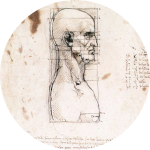 Cervical Myelopathy
Cervical Myelopathy
III-FUNCTIONAL STUDIES
**1 - Electromyogram (EMG)
EMG studies show signs of peripheral neuropathic lesions in the upper limbs, but do not specify the etiology. They are more likely to reveal radiculopathy than "anterior horn" lesion of relatively diffused topography. Electro-physiological disturbances involve several roots and / or segments and are often more extensive than suggested by clinical examination. It can sometimes reveal sub-clinical fibrillation. EMG is useful for differential diagnosis with amyotrophic lateral sclerosis. It may be normal in cases of moderate or purely sensory radiculopathy. The probability of observing an EMG anomaly in the absence of clinical motor impairment is extremely low (58).
This study is not justified in cases of well defined radiculopathy with good clinical and radiological correlation.
**2 - Evoked Potentials
Somatosensory evoked potentials (SEPs) of the lower limbs are disturbed in all patients with cervical myelopathy and inconsistent in the upper limbs. This perturbation is not specific and does not usually allow for the specification of the site of the lesion in the spinal cord. They are very useful for differential diagnosis with early ALS.
Pyramidal tract study by the recording of motor evoked potentials (MEP) may reveal subclinical impairment and allows for the specification of the level of lesion depending on the site at which the response is registered: C2/C3 for trapezius, C5 for the deltoid, C6 for biceps, C7 for the radial and C8/T1 for adductor fifth finger.
Evoked potentials are of both diagnostic and prognostic values (48) and should be done more routinely.
Upper limbs MEP are more sensitive in making the diagnosis. Disturbances in the SEP of the median nerve and the posterior tibial nerve are proportional to the severity of the lesion. Normalization of the median nerve SEP is associated with good post-operative prognosis.
In the event of degenerative cervical lesion responsible for structural spinal cord compression but without precise clinical signs, the existence of electromyographic signs of a lesion to the anterior horn, abnormalities of SEP, PEM and symptomatic cervical radiculopathy is correlated with the onset of myelopathy (4, 16).
 Encyclopædia Neurochirurgica
Encyclopædia Neurochirurgica

